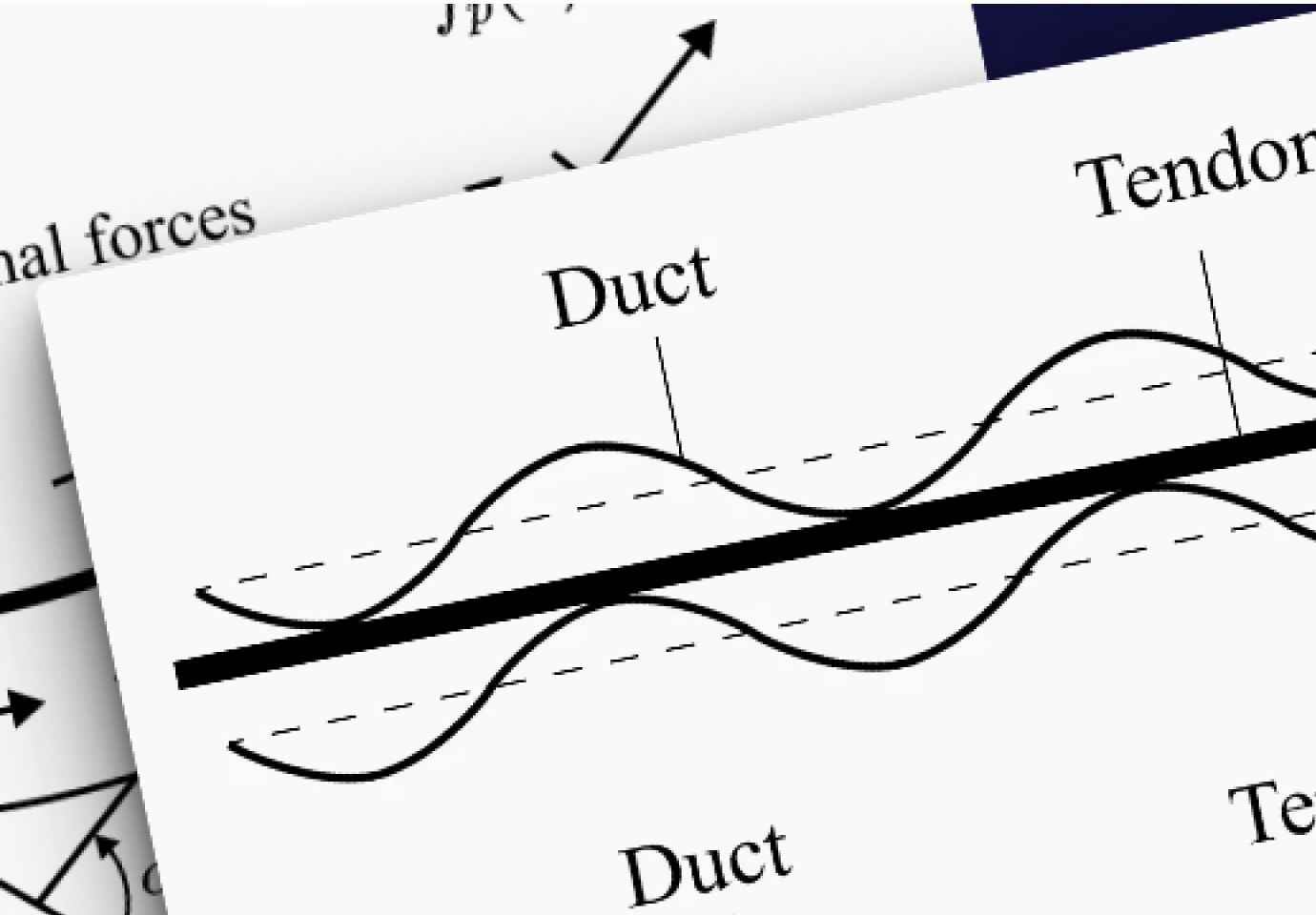1. Why do bridge engineers consider Non-linear Temperature Gradients?
Temperature loads threaten bridge safety, especially for long-span bridges. If the bridge is located with a big temperature difference, A structural engineer analyzes and designs a bridge based on the beam theory. The temperature gradient should be considered with the beam theory. The beam theory assumes the beam deforms primarily in one direction, the material behaves linearly elastic, and the beam has a uniform cross-section. It means even if the beam cross-section gets a different thermal expansion depending on the depth, the cross-section does not change, and it is also possible to substitute thermal stress as a self-equilibrating stress in restraint conditions.
For more information, I recommend reading the Non-linear temperature gradient series.
(Click to see the each post)
- Non-linear Temperature Gradient Part 1. AASHTO LRFD ↗
- Non-linear Temperature Gradient Part 2. BS Code & Eurocode ↗
- Non-linear Temperature Gradient Part 3. Effects on Beams ↗
- Non-linear Temperature Gradient Part 4. Effects on Bridges ↗
a. Difference things within existing functions and plug-in
Most CIVIL users already know a function to apply temperature gradient depending on the section properties. I will make sure to show you a simple example for comparison.
 Load> Temperature > Temperature Loads > Temp. Gradient & Beam Section Temp.
Load> Temperature > Temperature Loads > Temp. Gradient & Beam Section Temp.
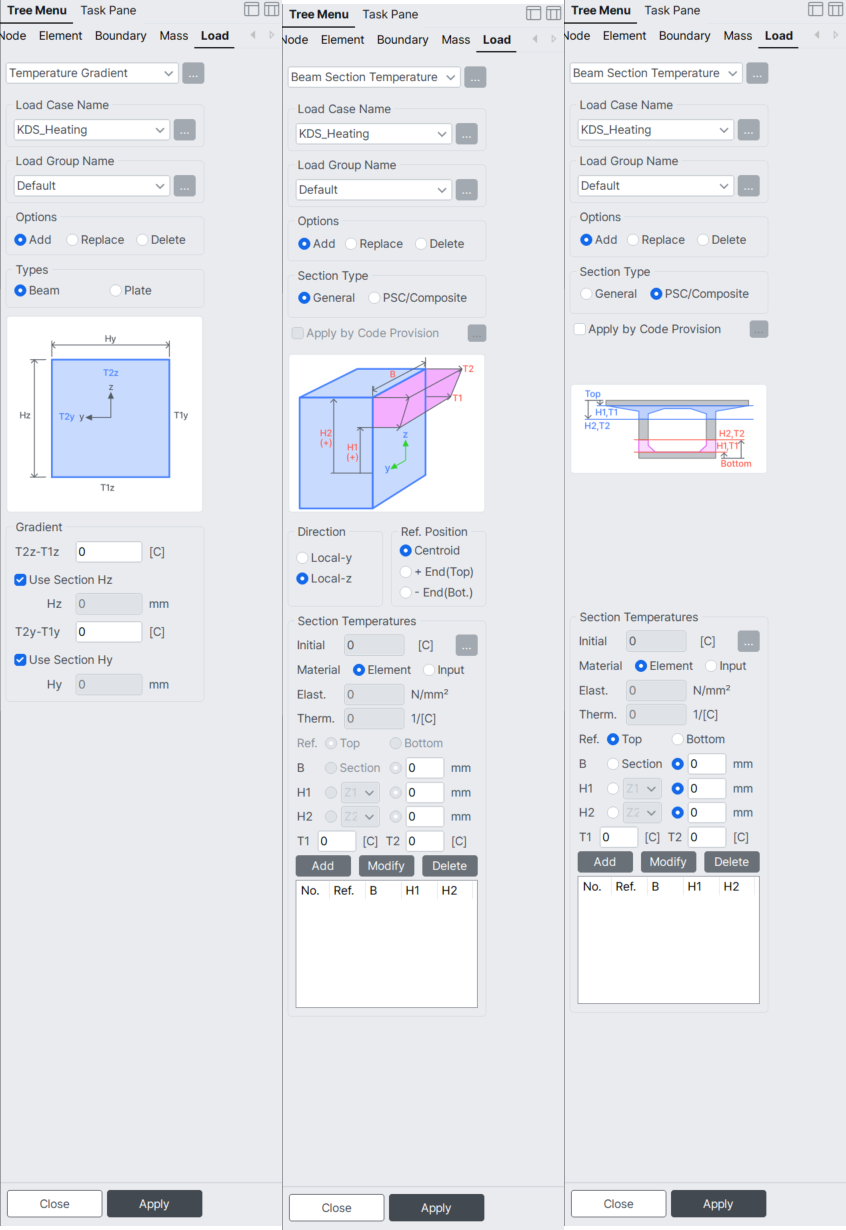
Temperature gradient input for general & PSC section
Add the section temperatures to apply a temperature gradient on the PSC beam. The user must add depth, temperature change locations, and temperature variation, select an element and then use loads. The loads applied do not show any stress values.
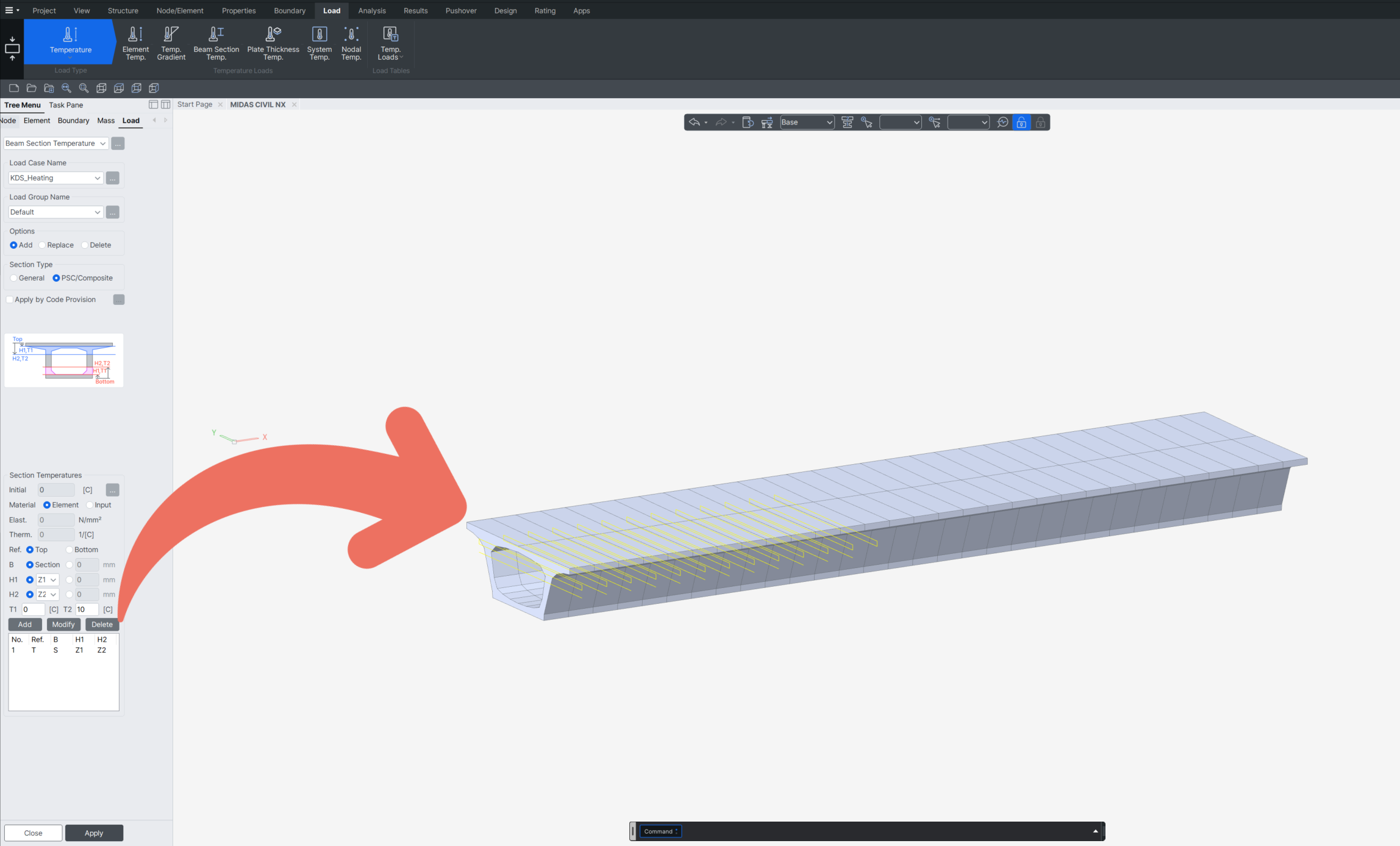
Apply Temperature Gradient on the PSC beam
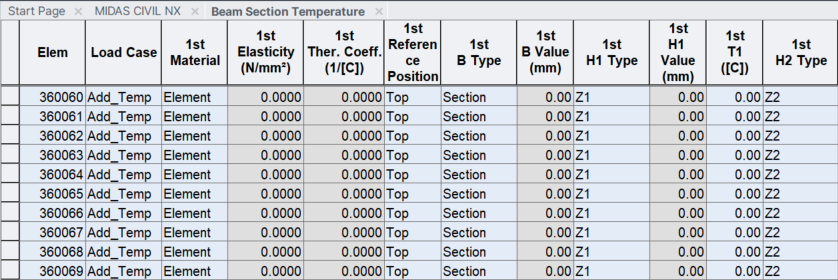
The table shows the applied new temperature load on the PSC beam
This is the most significant difference thing between traditional methods and plug-ins. The plug-in shows self-equilibrating stress in the stress summary table. The user can check non-linear temperature gradient graphs and self-equilibrating stress charts on the right side.
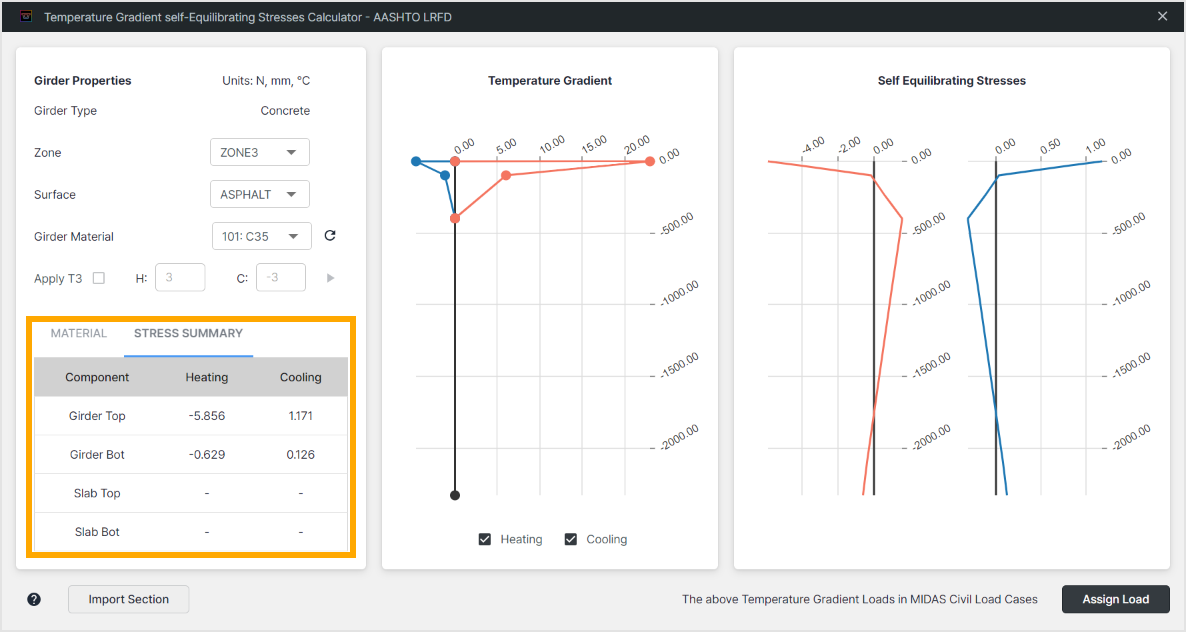
2. Temperature Gradient Self-Equilibrating Stresses Calculator Plug-in
This part will explain the operating steps and each component in detail.
1. Open MIDAS CIVIL NX → Connect API → Open Plug-in Marketplace → Run Temperature Gradient Stress Calculator
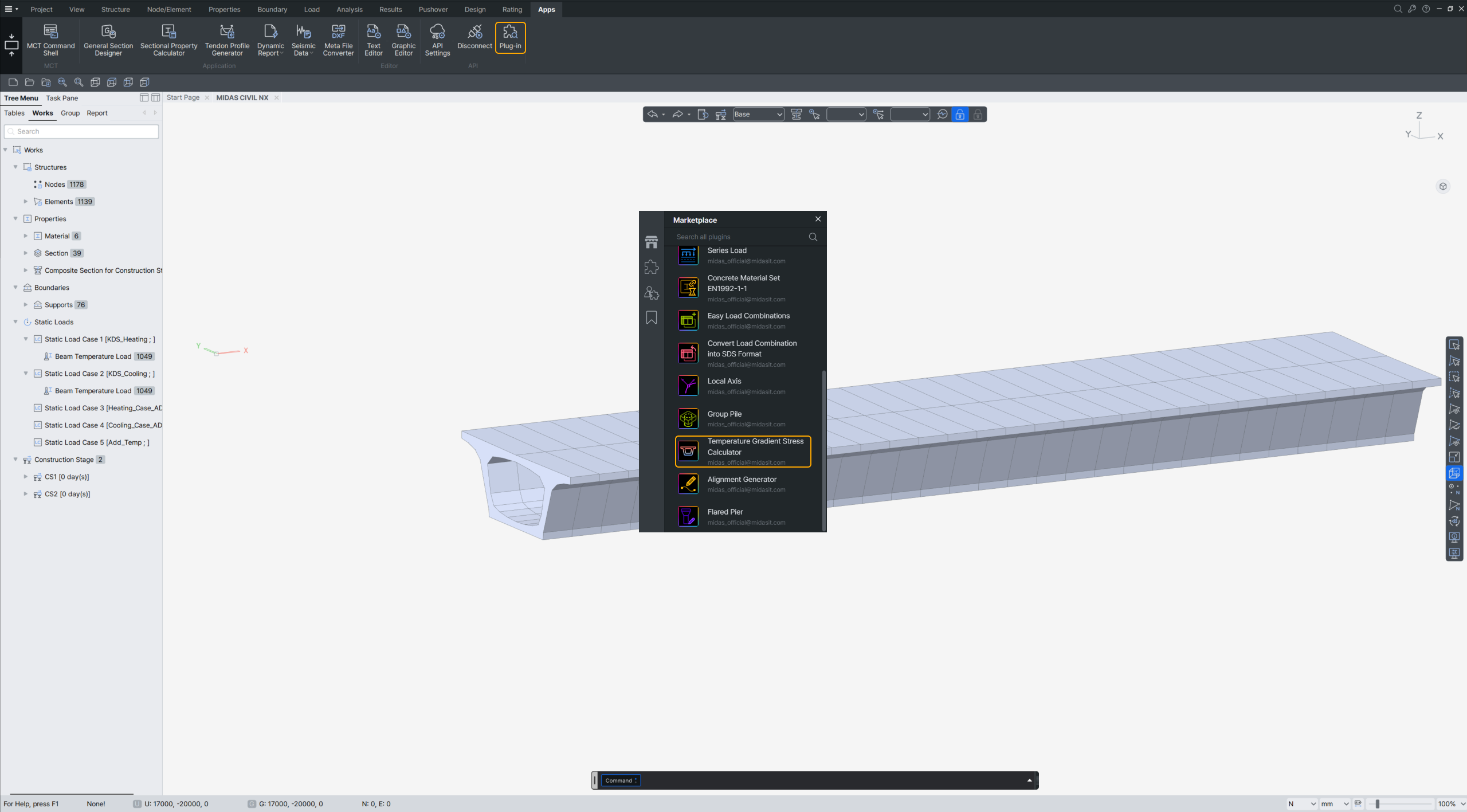
Figure1. Temperature Gradient Stress Calculator plugin Screenshot
2. When users operate the Temperature Gradient Stress Calculator plug-in, they can add this plug-in to the users’ bookmark(1). The user can read plug-in information(2) and start by clicking the Run(3) button.
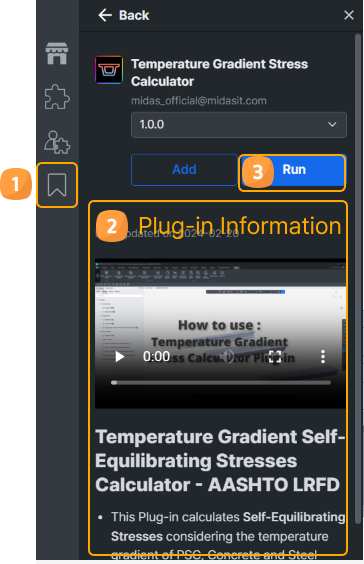
Figure 2. Temperature Gradient Stress Calculator plugin
3. A new window pops up. Click Import Section(1) and select a section(2) for applying temperature gradient. The section will be imported from your CIVIL file.
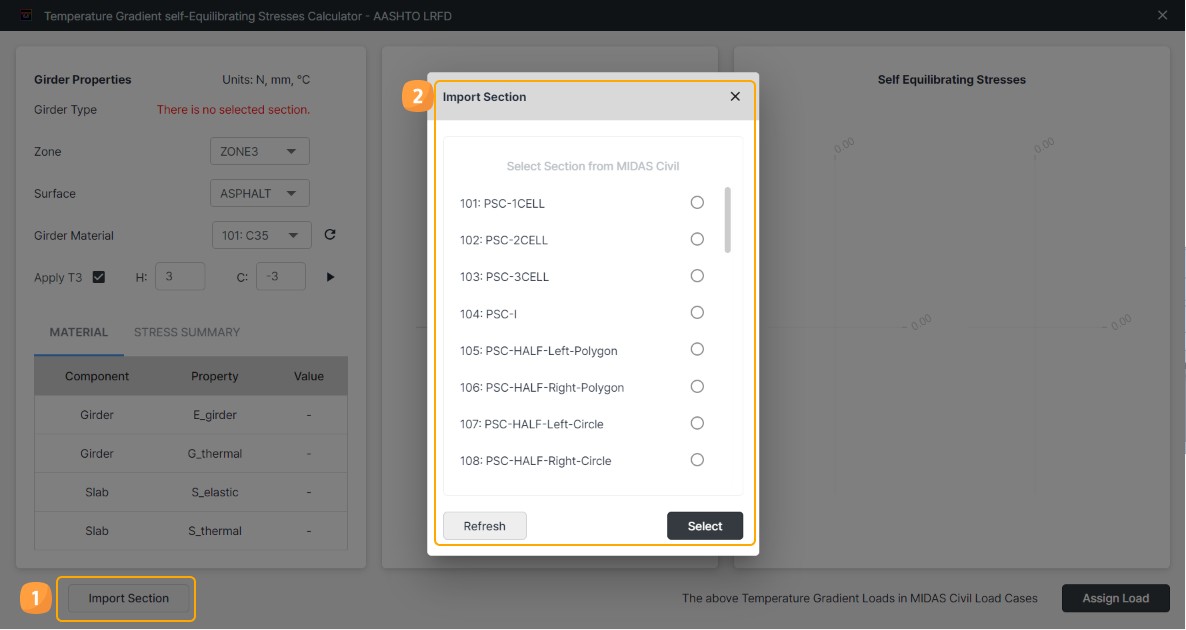
4. After selecting a section, the user can choose options: Temperature zone(1), girder surface(2), and girder materials(3) from the CIVIL file and select apply the T3 option, which is indicated at the bottom of the section. Then, the calculated value is shown in Table (5) based on selected material and options. The self-equilibrating stress is also checked here. Depending on the options, temperature gradient(6) and self-equilibrating stress(7) will be changed in real time.
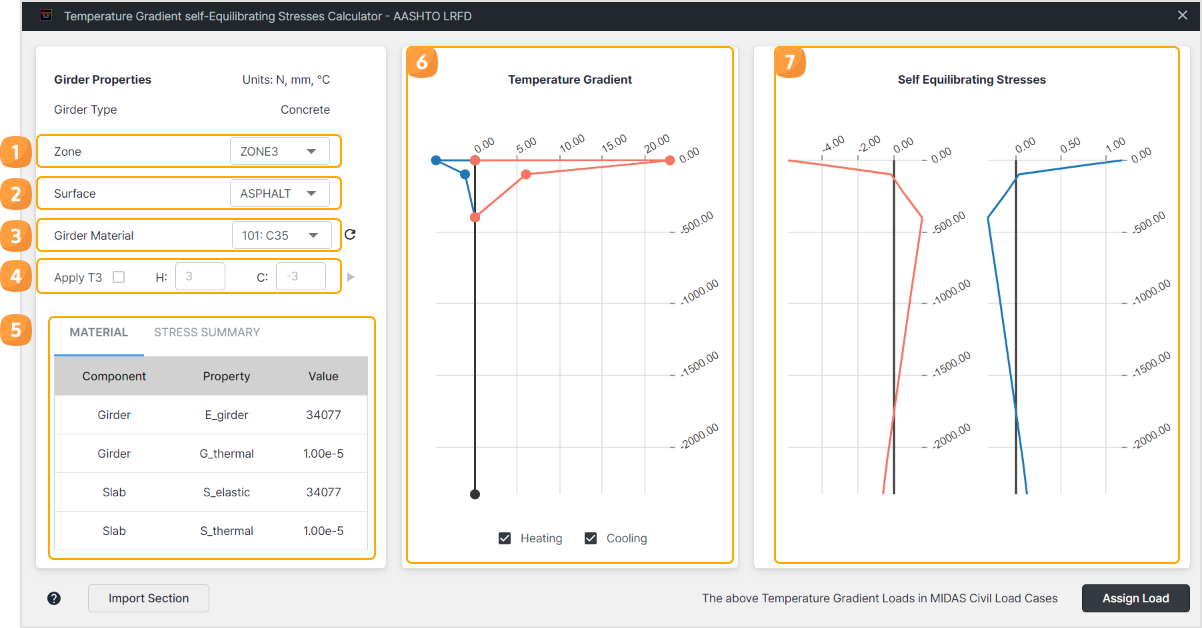
5. Now, it’s time to add a temperature load on the element. Add heating load(1) and cooling load(2). If you select one load case, you will choose just one.

6. Select elements for application, and then you can check that temperature loads are added.
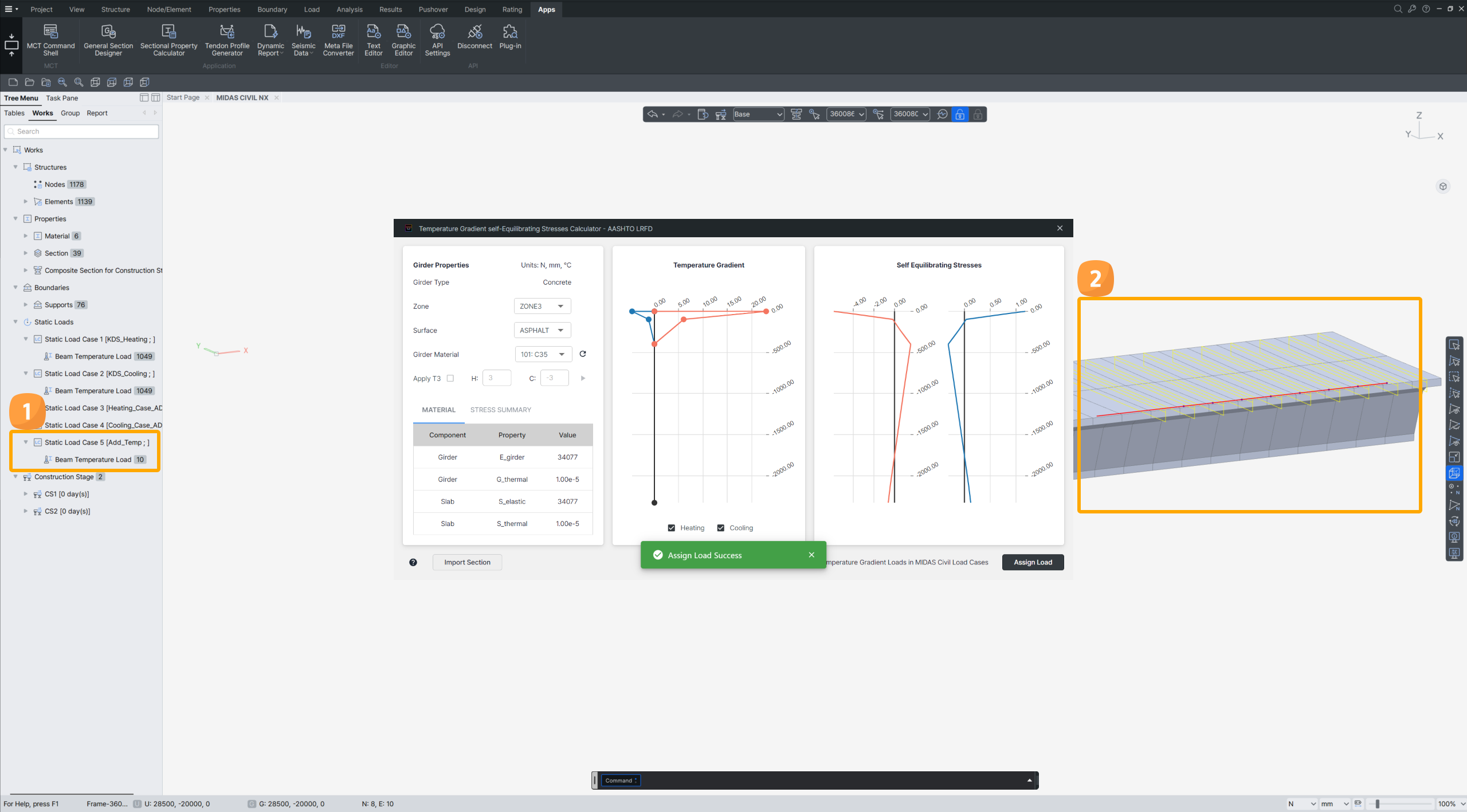
3. Conclusion
The temperature load is one of the critical loads in the bridge design process. The temperature gradient self-equilibrating calculator helps add non-linear temperature gradients comfortably and shows the self-equilibrating stress values depending on options. Asymmetry and composite sections are also applicable. Please try them on your bridge project.
 Get Started midas Civil
Get Started midas Civil
 Featured blog of this week
Featured blog of this week







